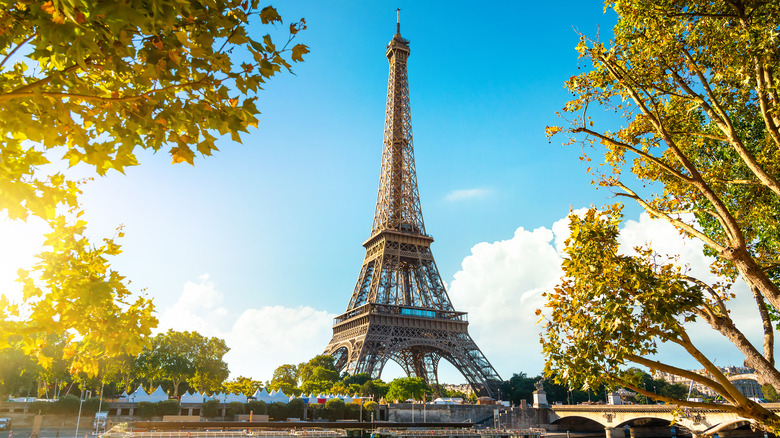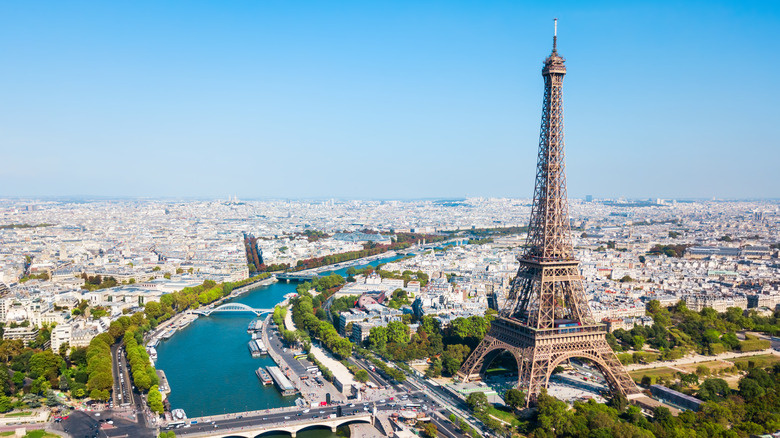The Eiffel Tower Was Constructed Much Faster Than You'd Guess
The city of Paris is one of the most beautiful and iconic on the planet. Over the years, it has become world-renowned for its culture, cuisine, the unique feeling of love and romance that only the City of Lights can express.
Needless to say, Parisians are incredibly proud of this reputation. Speaking to The Culinary Institute of America (in a translated interview via YouTube), legendary French chef Pierre Gagnaire stated that his remarkable career has been defined by his desire "to give emotion in plates, and thus to give a meaning to my work, to my life." That's passion. That's commitment. That's Paris.
Equally as iconic and beloved, of course, are the landmarks that have become synonymous with the city. One example is the Eiffel Tower, an ostentatious and stunning sight that no visitor can ever resist photographing from all manner of angles. Interestingly, this marvelous tower wasn't under construction very long at all.
A symbol of the city, built in a hurry
According to Britannica, the Eiffel Tower was dreamed up in the late 1880s by one Gustave Eiffel, an acclaimed bridge engineer. The 100th anniversary of the French Revolution was to be marked by the International Exposition of 1889, and the people of Paris wanted to erect a suitably bombastic structure in honor of the occasion. To that end, a grand contest was held, with the winning design to become a reality. Naturally, Eiffel's tower was selected.
The harsh iron design of the structure wasn't to everybody's taste. Per Tour Eiffel, one French newspaper published a scathing piece dubbed "Protest against the Tower of Monsieur Eiffel," which spoke out "in the name of the underestimated taste of the French, in the name of French art and history under threat, against the erection in the very heart of our capital, of the useless and monstrous Eiffel Tower." Nevertheless, supporters won the day, and construction went ahead. Incredibly quickly, too.
The intricately designed tower is around 300 meters high (324 at its very highest point on the tip of its antenna, World Atlas clarifies). Construction work began on January 26, 1887, Tour Eiffel reports, and was completed on March 31, 1889. Despite the scale of the project, which is held together by a dizzying total of 2.5 million rivets, it was erected in just over two years and two months (plus five days), from beginning to end. An incredible feat.

